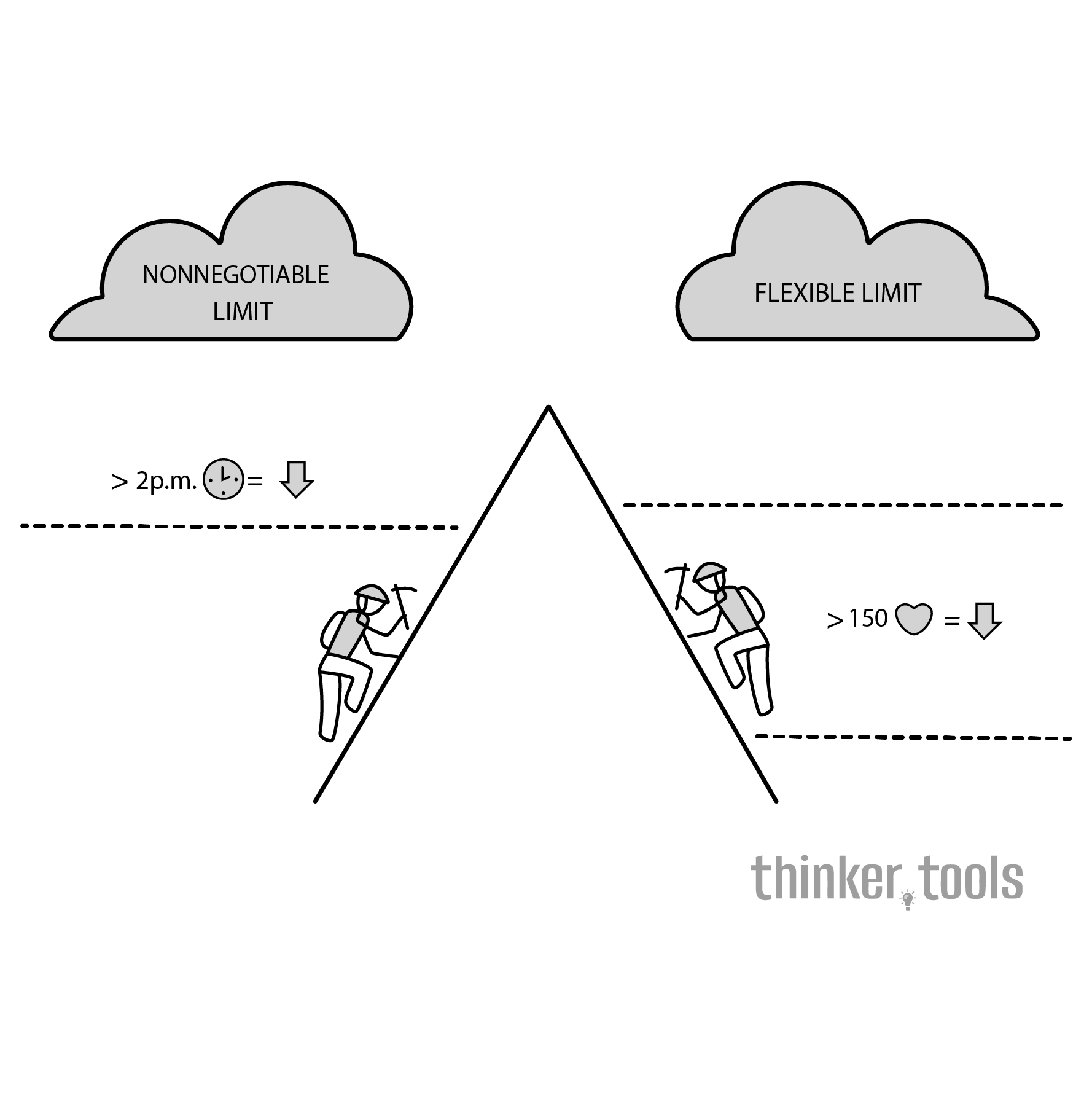
What is the Stop Rule?
The Stop Rule is a boundary-setting framework that helps you explicitly define your limits across different life areas. It divides boundaries into two categories: negotiable (flexible under certain circumstances) and non-negotiable (absolute lines that cannot be crossed). By clarifying these distinctions in advance, you make better decisions under pressure and communicate your limits clearly to others.
The Psychology and Purpose
The Stop Rule emerged from research in behavioral psychology and negotiation theory, which showed that people who define their boundaries in advance are far more likely to maintain them. Without predetermined stop rules, we're vulnerable to gradual boundary erosion—the slow compromise of our values through a series of small concessions. This framework acts as a pre-commitment device, making decisions for your future self when you're thinking clearly rather than when under pressure.
How to Implement the Stop Rule Step by Step
1. Identify Key Life Areas
Begin by listing areas where boundaries matter most:
- Work and career
- Personal relationships
- Health and wellness
- Financial decisions
- Time and energy
- Values and ethics
- Personal space and privacy
2. Reflect on Past Boundary Violations
For each area, consider:
- When have you felt your boundaries were crossed?
- What situations left you feeling resentful or depleted?
- Where do you consistently overextend yourself?
3. Define Non-Negotiable Boundaries
These are your absolute limits—crossing them threatens your core values, safety, or well-being:
- "I will not work more than 60 hours in any week"
- "I will not lend money I can't afford to lose"
- "I will not tolerate verbal abuse in any relationship"
- "I will not compromise my ethical standards for profit"
4. Establish Negotiable Boundaries
These are preferences that might flex under specific circumstances:
- "I prefer not to work weekends, except during critical project phases"
- "I generally don't take calls after 8 PM unless it's family"
- "I aim to exercise 4 times weekly but accept 3 during busy periods"
5. Create If-Then Statements
Convert boundaries into clear action plans:
- "If asked to work a seventh consecutive day, then I will decline and propose an alternative"
- "If someone raises their voice at me, then I will calmly state this is unacceptable and leave if it continues"
- "If pressured to invest more than my limit, then I will say 'That exceeds my investment boundary'"
6. Practice Boundary Communication
Develop phrases for maintaining boundaries:
- "That doesn't work for me"
- "I have a policy about..."
- "I've reached my capacity for..."
- "That crosses a boundary for me"
7. Regular Review and Adjustment
Monthly or quarterly, assess:
- Which boundaries served you well?
- Where did you struggle to maintain limits?
- What new boundaries do you need?
- Which negotiable boundaries should become non-negotiable?
Practical Examples
Professional Boundaries: Alex, a consultant, establishes:
- Non-negotiable: No client work on Sundays, no projects requiring falsified data
- Negotiable: Evening work (only for time-zone differences), travel frequency (up to 30%)
When a client demands Sunday meetings, Alex firmly declines, offering extended Monday availability instead. The clear boundary actually increases client respect.
Relationship Boundaries: Sofia defines:
- Non-negotiable: No tolerance for dishonesty, no lending to friends beyond $500
- Negotiable: Alone time needs (minimum 2 evenings/week), social event attendance
When her partner lies about a minor issue, she addresses it immediately as a non-negotiable violation, strengthening trust through clarity.
Digital Boundaries: A family establishes:
- Non-negotiable: No phones during dinner, no work emails during vacation
- Negotiable: Screen time limits (flexible on weekends), social media use
The clear rules reduce daily negotiations and conflicts.
Benefits and Life Impact
The Stop Rule framework transforms your life by:
- Reducing decision fatigue through predetermined responses to boundary challenges
- Preventing resentment by maintaining limits before reaching breaking points
- Improving relationships through clear, consistent communication
- Protecting well-being by safeguarding essential needs and values
- Building self-respect through honoring your own limits
- Creating predictability that others can understand and work with
- Enabling growth by conserving energy for priorities rather than boundary battles
The Stop Rule doesn't make you rigid or inflexible—it makes you intentional. By distinguishing between negotiable preferences and non-negotiable requirements, you create a life that honors both your need for flexibility and your core values. You'll find that clear boundaries, paradoxically, create more freedom: freedom from resentment, freedom from overcommitment, and freedom to invest fully in what matters most. In a world that will take as much as you're willing to give, the Stop Rule ensures you give consciously and sustainably.